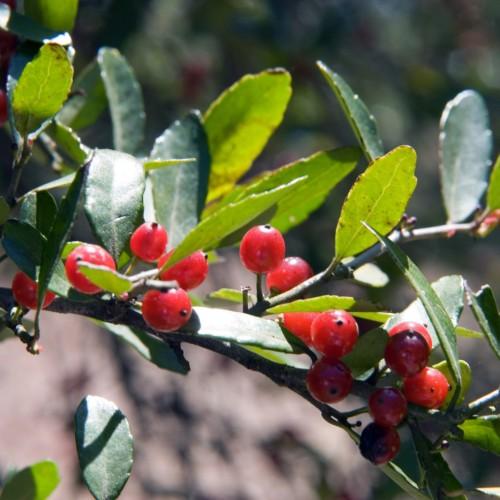
yaupon
Ilex vomitoria 'Nana'
Cycle:
Perennial
Watering:
Frequent
Hardiness Zone:
7 - 9
Flowers:
Flowers In Spring
Sun:
Full sun,part shade
Leaf:
Yes
Growth Rate:
Low
Maintenance:
Moderate
Poisonous To Humans:
Yes
Poisonous To Pets:
Yes
Drought Tolerant:
Yes
Salt Tolerant:
Yes
Care Level:
Low
watering
Water Yaupon (Ilex vomitoria ‘Nana’) regularly and deeply for optimal growth. When the soil is dry to the touch, about every 7-10 days is a good rule of thumb. However, during hotter summer months, watering every 5-6 days can be beneficial if temperatures remain high. Make sure to thoroughly water the soil so that excess water runs out of the pot’s drainage hole to ensure root health.
sunlight
Yaupon (Ilex vomitoria 'Nana') is a species of evergreen plant that thrives in full sun to partial shade. It prefers a minimum of 8 hours of direct sunlight per day, and prefers 10-12 hours during the summer months, when its growth rate is the highest. With adequate sunlight, yaupon will be bushier and produce more berries, so full sun exposure will be beneficial. Yaupon can be quite tolerant of temperature extremes, both hot and cold, so it can tolerate the full sun in most locations.
pruning
Yaupon (Ilex vomitoria 'Nana') can benefit from pruning to maintain desired shape and size. Pruning should be done in the late winter to early spring season, when the plant is dormant. This species is considered as a low maintenance evergreen shrub, and does not require pruning for improved growth or flowering. However, Yaupon can be selectively pruned to reduce its size, improve its shape or rejuvenate older, leggy shrubs. Make sure to use sharp and sterile tools to avoid bacterial and fungal infections to the plant. To ensure safety to the budding stems and branches, prune the excess growth by making sure to not prune more than 1/3 of the plant. Trim any excess branches and stems that appear overcrowded and crossing each others, especially the internal part of the shrub. In addition, trimming any dead or discolored foliage can also help to provide better air circulation, stimulate flowering and reduce disease and pests.
